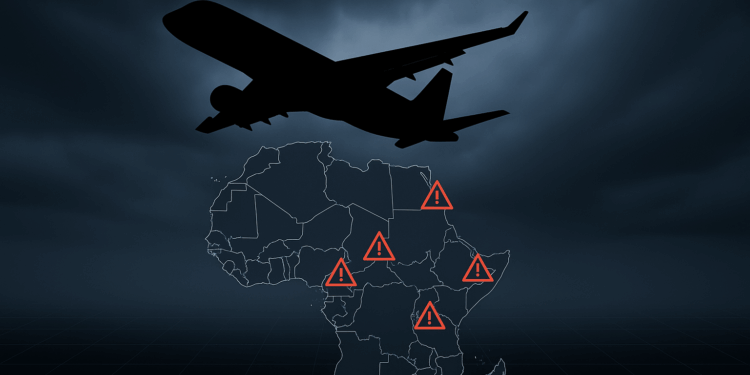Africa Security & Airspace Risk Update for Business Aviation (Late 2025)

Business aviation operators planning missions into or over Africa continue to face a rapidly evolving set of security, airspace, and operational challenges. Several regions are experiencing heightened conflict, increased criminal activity, or degraded ATS capabilities, all of which can affect flight planning, crew movements, and diversion strategies. The overview below highlights the most significant current risks and recommended considerations for operators.
Mali
Security conditions in Mali remain unstable. The U.S. government has directed non-essential personnel to depart and continues to issue a Level 4 “Do Not Travel” advisory. Fuel shortages, periodic civil unrest, and military activity contribute to a higher-than-normal operating risk.
- GABS (Bamako) remains open, but layovers and overland crew movement should be avoided.
- Build additional fuel planning margins, as supply reliability continues to fluctuate.
Niger
The kidnapping threat in Niger remains severe. A recently reported abduction of a U.S. missionary pilot in Niamey underscores the reach of militant groups targeting foreigners.
- Militant networks increasingly rely on commercial satellite-broadband tools.
- Avoid non-essential surface travel, especially outside Niamey.
- Treat overnight crew rests as high-risk unless operationally unavoidable.
Nigeria
Nigeria continues to face persistent security challenges, including insurgent activity, banditry, and more than 4,700 reported abductions since 2024.
- Updated aviation cybersecurity requirements went into effect in October 2025, but physical-security challenges remain the primary concern for crews.
- Minimize time on the ground, avoid overnighting when possible, and ensure secure transportation is arranged in advance.
Somalia FIR (HCZZ)
Airspace messaging remains inconsistent due to ongoing administrative disagreements between Somalia and Somaliland.
- Somaliland has issued its own PPR requirements for certain overflights.
- Somalia maintains full FIR authority per published AICs.
- ICAO recognizes Somali CAA as the ATS provider above FL245, but conflicting instructions still circulate.
Operators should verify all FIR guidance with recognized authorities and avoid accepting clearances inconsistent with ICAO-recognized control.
Sudan
Sudan remains closed to civilian aviation, and the threat environment continues to deteriorate as fighting expands geographically.
A Sudanese military aircraft was lost on Nov. 4, with early indications suggesting possible engagement by a short-range air-defense system. Drone activity and retaliatory fire were also reported in multiple cities, demonstrating the presence of advanced weapons and unpredictable engagements in contested areas.
With the HSSS FIR fully closed, viable routing options are limited:
- A narrow contingency north–south track near Port Sudan, requiring diplomatic clearance and strict adherence.
- Offshore Red Sea corridors via Egypt and Saudi Arabia, currently the lowest-risk option.
- East–west routings above South Sudan, where ATC services are suspended above FL245 and separation is procedural only.
Given the volatility and lack of reliable ATS capability, operators should avoid Sudanese airspace unless no other routing is feasible.
Operational Takeaways
- Add fuel and alternate margins—supply disruptions remain possible.
- Avoid layovers in high-risk regions unless required.
- Confirm FIR guidance directly with recognized authorities.
- Revisit security briefings before each mission; conditions often shift quickly.




